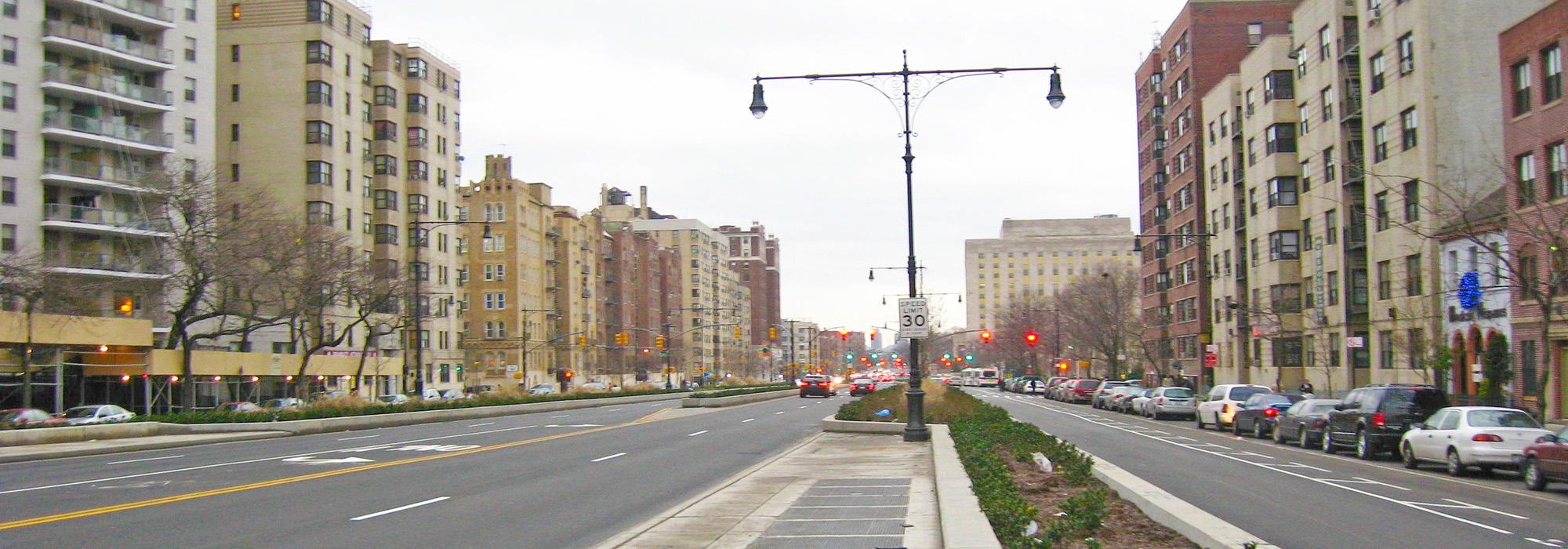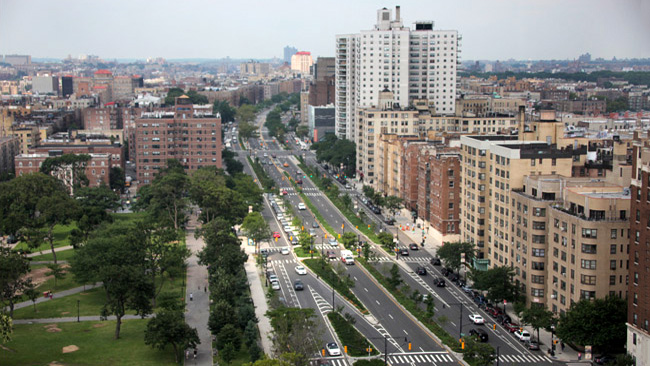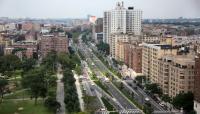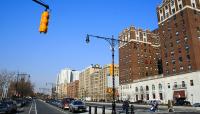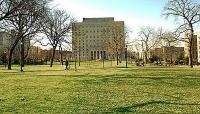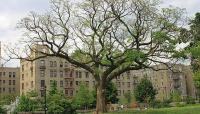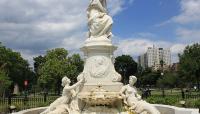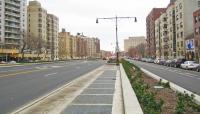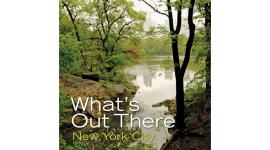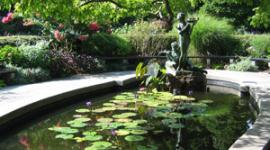Landscape Information
Extending just under five miles along much of the western length of the Bronx, the concourse has served as the Bronx’s backbone since its opening in 1909. Lined by some of the best examples of 1920s and 1930s Art Moderne-style architecture, the Grand Concourse was built to facilitate access between Manhattan and the large parks of the Bronx. Modeled after the Champs-Élysées and built at the height of the City Beautiful movement, the design by Alsatian engineer Louis Aloys Risse included paths for horses, cyclists, and pedestrians separated by tree-lined dividers, with underpasses at all major intersections. Construction progressed slowly due to natural and political factors, necessitating the boulevard’s side roads originally intended for horse-drawn carriages to be repurposed to accommodate automobiles. As built, the concourse consisted of a 58-foot-wide central speedway with a narrow central mall and 37-foot-wide service roads separated from the main roadway by malls six feet wide. It was extended south to East 138th Street in 1924, integrating small open park plots at East 161st Street into Joyce Kilmer Park.
After decades of decline, during which time grass medians were replaced with green-painted cement, the concourse has since seen vast improvements, including the renewal of planting beds, trees, and lampposts along East 161st Street and the transformation of contiguous vacant lots into gardens. More recent construction for the concourse’s centennial included repainting underpass structures, narrowing service roads, raising planted medians, replanting trees, adding distinctive paving, and installing new light fixtures, as well as incorporating new roadways, sidewalks, and bike lanes. In 1987 significant stretches of the Grand Concourse were added to the National Register of Historic Places as a historic district.



